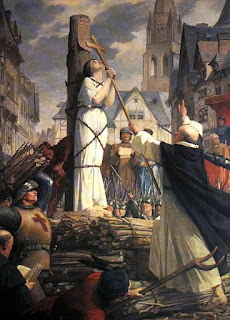The Karabakh conflict was over with the
glorious victory of Azerbaijan Army over Armenia forces on November 10, 2020.
The conflict began in 1988 by Armenians to invade Azerbaijan’s districts which
are historically belong to Azerbaijani people and are internationally
recognized as a part of Azerbaijan and finished in 1993 with a
ceasefire. But in 30 years Armenia didn’t stop terrorism and violence against
Azerbaijan’s soldiers, civilians, historical, religious and cultural monuments.
The conflict between Azerbaijani and Armenians didn’t began in 1988 It is a
long-lasting process for over 200 years. During these years they have committed
unprecedented mass genocides against our people (1918-1920, February 26, 1992),
deportations against the population of North Azerbaijan, total destruction of
our culture, historical monuments and toponyms, expatriation of our unarmed
people from the primordial lands by force of arms and the perpetration of
atrocities and other similar processes unprecedented in history. Armenians claim that they are the native
people of the South Caucasus and want to create ‘their fictitious state –Big
Armenia’ in Azerbaijan territory However,
the historical facts show that Armenians are not the aboriginal population of the South Caucasus,
including Karabakh; they were resettled to these lands by tsarist Russia.
The
resettlement of Armenians to Azerbaijani territories was a part of the Russian
Empire’s long-standing plans, aimed at establishing an Armenian state in
Azerbaijani lands going back the early XVIII century. In order to create a
Christian buffer on the borders with Iran and Turkey, Russia first of all began
to resettle Armenians on the territory of the Iravan, Nakhchivan and Garabagh
khanates, as well as other fertile lands of Azerbaijan. The Russian Empire,
which at the beginning of the 19th century used Armenians as a tool for the
occupation of the South Caucasus, made the mass resettlement of Armenians in
the already conquered region of the South Caucasus its state policy. Moreover,
the implementers of the occupation of the Russian Empire, in order to weaken
the anti-Russian protests in this or that occupied region, made the
resettlement of the Armenian population one of their main tasks.
The
mass resettlement of Armenians living in the territory of Iran to the
Azerbaijani lands, in accordance with Article XV of the Turkmenchay Treaty,
concluded at Russian side’s insistence between the Gajar Iran and the Russian
Empire on February 10, 1828 in the village of Turkmenchay in South Azerbaijan,
was officially legalized Under Article XV of the Turkmenchay Treaty, the Shah’s
government should not hinder the resettlement to the territories controlled by
Russia of those who, betrayed their state during the war and served the
Russians (the Armenians - Y.M., G.N.). Armenians living in Iran were given the
right to free transition under the protection of Russia (According to the Cambridge History of Iran)
“The Armenians resettled to the territory of
the Iravan Khanate, to Ganjabassar, Garabagh and other Azerbaijani lands, as
well as to Georgia, were compactly settled in the lands of the local Muslim
population – in foothill areas and cities, distinguished by the beauty and
splendor of nature, wonderful climate, and pure water. Armenians also had
occupied 270 houses in the Sardarabad fortress” (См:ОРВЗ (Составил
Лекгобытов). ч.IV. СПб., 1836, c.291) . This is another historical
fact of the resettlement of Armenians.
May
29, 1918! - The date when the Armenian state was first created in the history
of the South Caucasus, on the territory of North Azerbaijan.. Contrary to
Armenian historians, it is a historical fact there hadn’t been any state of
Armenia people in the South Caucasus by that time. Even the Treaty of Kurekchay
, which was concluded in 1805 between Russia and the Garabagh Khanate, one of
the states of Azerbaijan, proves it . “A treaty between the Garabagh khan and
the Russian Empire on the transfer of the khanate to the rule of Russia on May
14, 1805” (Акты
Кавказской Археографической комиссии. Под ред. Ад.Берcе. т. II. Тифлис, 1868, док.
1436, с. 702-705.)
However, Armenian historians, ignoring the
true history, trying to distort the very content of the Kurekchay Treaty, claim
that the territory of the Garabagh Khanate, allegedly, belonged to the
Armenians, and the treaty itself was concluded between the Armenians and
Russia, although the resettlement of Armenians from Iran and Turkey to
Azerbaijan to the territory of the Garabagh Khanate began in 1828, many years
after the signing of the Kurekchay Treaty in 1805. Furthermore, the newcomer
Armenians in 1978, celebrating the 150th anniversary of their resettlement to
the territory of Daghlig Garabagh (Nagorno Karabakh), erected a monument on
this occasion in the village of Margushevan, Aghdere district.
Source
“Ermənilərin
Şimali Azərbaycan torpaqlarına köçürülməsinin regional təhlükəsizlik üçün nəticələri”
("Results of the relocation of Armenians to the lands of North Azerbaijan
for regional security")
Yaqub Mahmudov, Guntakin Najafli ,
2020, Baku

























